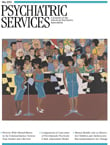Motivational Interviewing in Health Care: Helping Patients Change Behavior
Lecturing at patients and arguing with them to change their unhealthy behaviors is rarely successful. Human nature resists being told what to do. Motivational interviewing, conceived by psychologists for the treatment of alcoholism, is a less confrontational method in which the patient, not the clinician, gives voice to the argument for change. Although clinicians in practically every sector of health care confront the effects of unhealthy behaviors, most may not have the time or the interest to have prolonged counseling sessions with their patients. Stephen Rollnick, William Miller, and Christopher Butler have written a book that shows how elements of motivational interviewing can be applied to the "hurly-burly of everyday clinical practice" in a wide variety of treatment settings.
Early chapters discuss the basic communication skills that apply to motivational interviewing. The practitioner starts by asking open-ended questions and avoids prematurely focusing on action. The interviewer anticipates where the discussion is heading and tries to offer back to the patient the next, as yet unsaid, sentence. Rather than telling patients what they should do, the practitioner offers generalities about what has worked for other patients in the past. The practitioner avoids overloading the patient with information and keeps a conversational tone.
Several techniques are repeated throughout the book. One is that the clinician should note any time the patient suggests that change may be possible. A person tends to believe what one hears oneself say, so the patient's own statements of "change talk" should periodically be presented back to the patient. Another important technique is for clinicians to avoid the "righting reflex," a desire to set things right and rescue the patient.
Later chapters present well-written case examples that demonstrate how to make brief, timely interventions. A trauma surgeon asks a patient to consider the role that alcohol played in a motor vehicle accident. A practitioner in a cardiovascular clinic encourages a patient recently recovered from a myocardial infarction to exercise and diet. Flexibility in style is recommended. If the patient is in distress after receiving bad news, the clinician prioritizes listening. A more direct, take-charge approach is appropriate when life is on the line. When promoting behavioral change, there is a middle ground in which the clinician acts as a guide, offering support and advice while allowing the patient to find his or her own way.
A concluding chapter examines systemic issues. In one example, modifying the physical layout of a substance abuse clinic and making the space more welcoming translated to a more engaged patient population. In the developing world, the stigma of HIV can, in part, be overcome by empowering patients, and motivational interviewing can assist in this process. This chapter veers towards the theoretical, a departure from the practical, how-to nature of the earlier chapters.
The authors are leading authorities in motivational interviewing, having founded, developed, and written extensively on the topic over the past 25 years. They acknowledge that proficiency cannot be obtained simply from reading this slim volume. However, the book succeeds in appealing to several audiences. For a broad range of frontline clinicians, including those who work in various medical specialties, the book gives useful insights that can have an immediate impact by making one's practice more productive and more enjoyable. For those with special interest in human behavior, particularly those in the mental health field, this book is a concise, highly readable introduction to motivational interviewing and will likely pique interest for further study of this powerful tool for promoting change.
The reviewer reports no competing interests.



